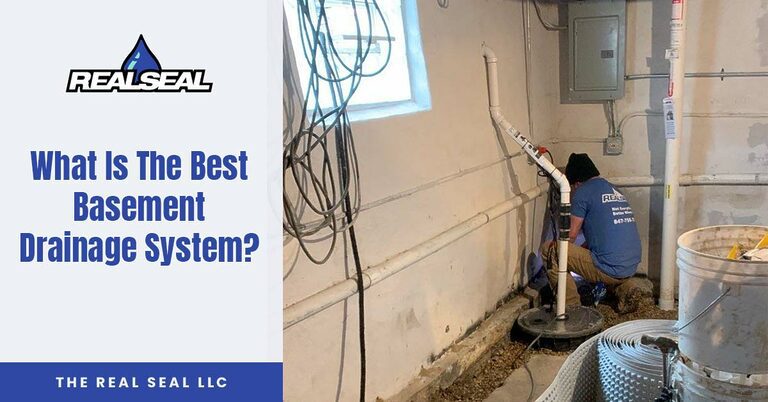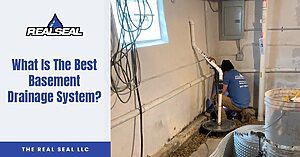Installing a basement drainage system, or drain tile, is your first defense against groundwater seeping into your basement. A drain tile system can be installed on the interior or exterior of the home. Choosing the best basement drainage system usually depends on when the drain tile system is installed – before or after the house is constructed – and your budget.
What is a Basement Drainage System?
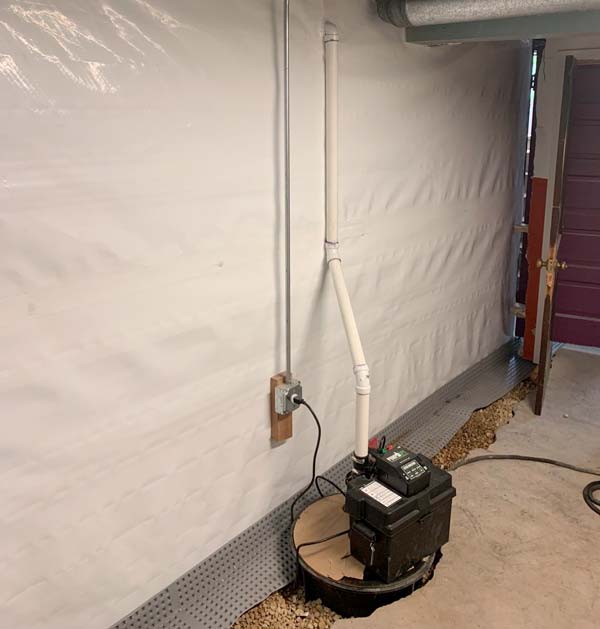
A drain tile system – interior or exterior – consists of a buried, perforated drainage pipe, either solid or corrugated. The pipe is embedded in gravel to keep it from getting clogged with dirt and pitched at 1/8″ per foot to keep the water flowing. It terminates as it drains into a sump pit. Once the sump pit fills with water, a sump pump turns on and ejects the water away from the foundation.
The goal of a drain tile system is to prevent excess groundwater from building up in the soil around the foundation. If the soil around your foundation is dry, you’re less likely to have problems with water intrusion into your basement.
How is a Basement Drainage System Installed?
Interior Drain Tile
Installing an interior basement drainage system requires the removal of the concrete slab near the wall. After the soil below the slab is exposed, a trench is dug to install the drainage pipe. After installing the drainage pipe, the area is backfilled and compacted before new concrete is poured.
Exterior Drain Tile
An exterior drain tile system is installed around the outside perimeter of the foundation at the footing level. Extensive excavation of the soil near the foundation walls is necessary to expose the footing and install the pipe, which is why this is a more expensive option in an existing home.
A sump pit and pump are also part of a drain tile system, whether exterior or interior. The sump pump will run when the water level in the sump pit reaches a predetermined level. It will pump the water to an area away from the foundation. A battery backup system can also be installed so the sump pump will run during a power outage.
Which Basement Drainage System Should You Choose?
The interior and exterior drain tile options provide the same benefit: they catch excess groundwater and channel it toward a sump pit. Once the sump pit fills with water, the pump turns on and releases the water a safe distance from the foundation. This keeps the ground around your home dry and makes it far less likely that moisture will enter your basement or crawl space.
Since the interior and exterior drainage systems do the same job, deciding which is best depends on your budget. Both options require significant work, but an interior basement drainage system is much more cost-effective to install in an existing home. An exterior drain tile system is usually considered when the area has been excavated, and the footing is exposed. This might occur during the home’s initial construction or if you opt to install an exterior waterproofing membrane.
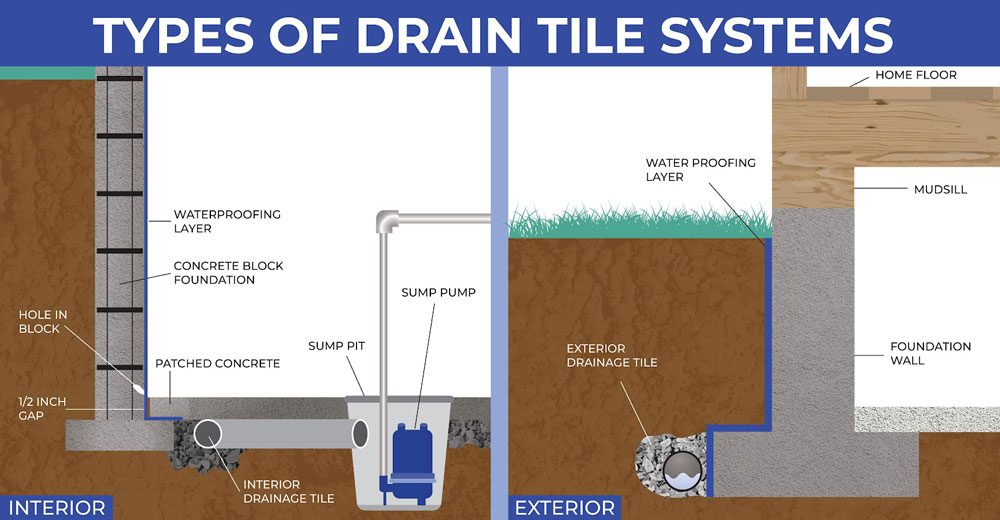
How Long Will Basement Drainage Systems Last?
Unlike many things around the home that are here today and gone tomorrow, a basement drainage system is designed to last a lifetime. The Real Seal provides a lifetime warranty on the drain tile systems we install, and it is even transferable to the new owners if you sell the home. That doesn’t mean, however, that all drain tile systems are created equal. If you DIY the project or hire a local handyman to install the system “under the radar,” you will get what you pay for. Those systems will not likely stand the test of time. In other words, taking the easy route the first time means you will probably pay twice for the drain tile system.
Basement Waterproofing: Beyond The Drainage System
Installing a drain tile system is sometimes essential to keep a basement or crawl space dry. However, The Real Seal also offers other services to fully waterproof the basement so it can be used for extra living space or worry-free storage.
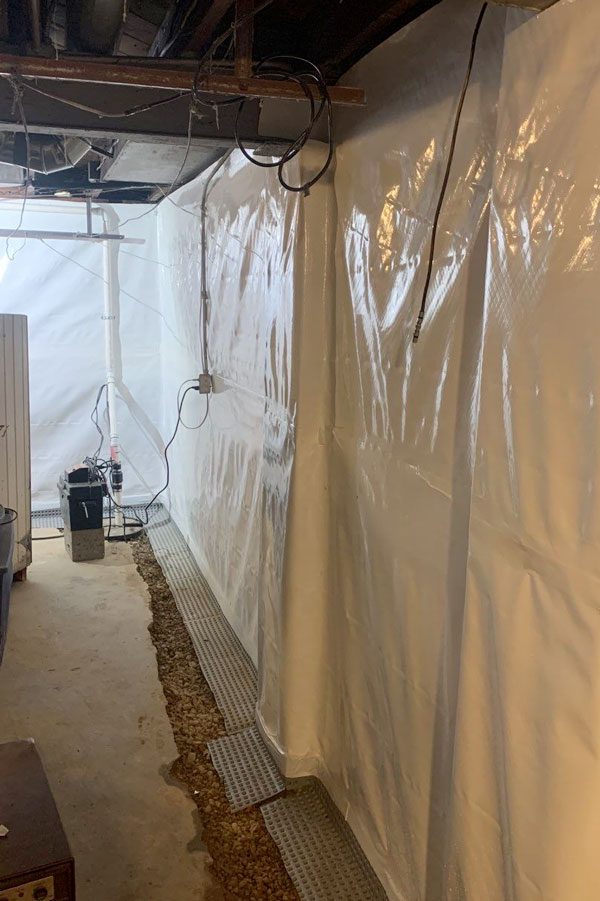
If there are any existing cracks in the foundation walls, they will be repaired. Concrete crack repair can be accomplished using carbon fiber staples and epoxy injections. The cracks are sealed permanently with this method.
A vapor barrier is installed on the foundation walls to prevent water from entering the basement through the basement walls. It is a thick layer of polyurethane sheeting that redirects any water that does seep through the wall into the drain tile system.
Basement windows may be installed with window wells, or they can add window wells with drains and covers to existing windows. This keeps water from getting into the basement from around the windows.
Exterior work may also be necessary, including installing downspout extensions. Rather than having the downspouts terminate near the foundation, these extensions carry the water away from the foundation, where it will not impact the basement walls.
If you have any questions about installing a basement drainage system, contact The Real Seal. We will happily provide you with the options necessary to keep your basement dry. You can also learn more about other systems, such as how a French drain works, and more with us.
